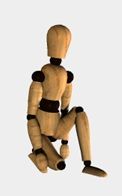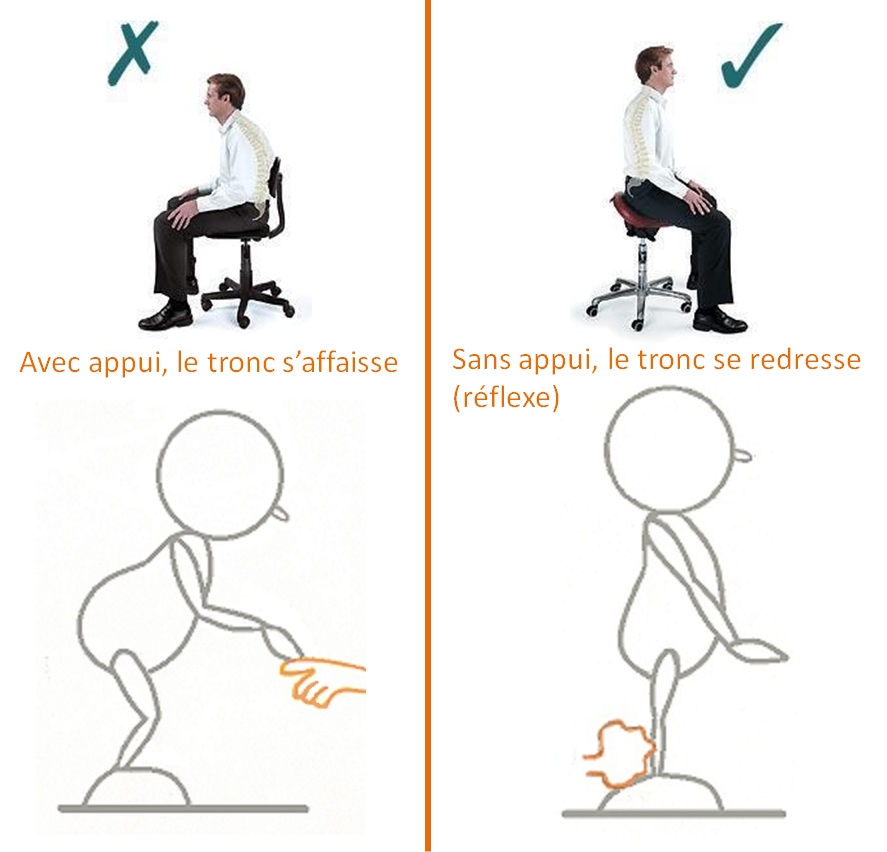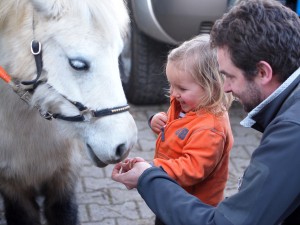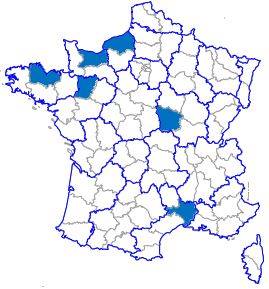Rehabilitation methods.
This page does not set out to provide an exhaustive definition of all of the rehabilitation methods. We explain some of the methods available and give our personal opinion based on our experience of them. We share this because we wish we’d known at the time that we were entitled to challenge the treatment methods we were offered!
So far, we have tested the following methods:
- Bobath method
- Medek method
- Equine therapy / Hippotherapy
- Hydrotherapy: Swimming pool/spa
- Tomatis method
- Conductive education
- Vojta method
- Primitive reflex integration method
- Dévény method
- Fine motor skills and iPad
Bobath method
This is THE preferred method used by paediatric physiotherapists in France for neuromotor rehabilitation.
The therapist helps the child to experience « normal » movement, so they can broaden their repertoire of sensory motor experiences and improve the quality of their everyday movements.
En pratique, le succès de cette approche est fortement conditionné par l’iIn practice, this method’s success is largely determined by the level of the child’s input and their personality. As far as Enora is concerned, she has never tolerated us making her perform a movement in a way which is counter-intuitive for her. Between the ages of 14 to 24 months, physio sessions consisted of her doing the notorious “half kneeling” exercise to learn how to stand up. This movement was impossible for her to do because she couldn’t place her foot at a right angle on the floor. Every time she tried she was told « no, not like that ». How can a child under 2 years old, who only wants to play, be expected to cope with constant correction? So twice a week, for 10 months, Enora was repeatedly set up to fail. She cried throughout the sessions and quickly lost all self-confidence. On a day to day basis she stopped trying out new ways of moving around. « Can’t » she’d say. She fell victim to practitioners who wanted to « tick off the stages of development in the right order », like with the Le Métayer method. We weren’t going to move on to the next stage until she’d mastered the first movement.
In summary, it was an epic failure for us. These days, we still do Bobath sessions but mainly for the stretching and mobilisation exercises. As for the rest, we firmly believe that this method will not improve Enora’s motor skills to any great extent.
Medek method
This physical therapy was a huge revelation. The MEDEK method (« M » for Motor, « K » for Kinetic) is also known as CME (Cuevas-Medek-Exercises). It was invented by Ramon Cuevas, a physiotherapist in Venezuela in the 1970s. His primary aim was to “provoke active and automatic motor responses” not taking the “cooperation and motivation” of the child into account. A real breakthrough!
The idea is to train the brain to create a postural control response which bypasses the impaired parts of the nervous system. This is done:
- by presenting the child with « progressive challenges » whereby they have to resist gravity to avoid falling. This progressive acquisition of balance helps the child to acquire vertical control of the head, then the torso.
- by practising over and over again so that the brain locks in the movements.
The diagram opposite attempts to give you an idea of the Medek approach.
Two other features differentiate it from traditional methods:
- The Medek method includes dynamic stretching exercises which are incorporated into functional exercises. These exercises are unquestionably much more effective than the Bobath static stretches!
- Hypertonia of the lower extremities (equinus foot position for Enora) doesn’t prevent the standing position from being stimulated. In other words, the Medek method prompts the standing position in disabled children to help develop vertical control of the torso.
Enora tried this method at 21 months, and after just 6 sessions we saw her stand for a few seconds for the first time ever. She regained her self-confidence and felt brave enough to take small risks in her movements. This method requires considerable involvement from the parents, as they are taught the exercises by the therapist so they can do them at home twice a day for 45 minutes, 6 days a week. Time-consuming? Definitely, but it’s worth it.
The results can be seen after the first sessions. This video starts off by explaining the theory behind the method, followed by more videos in which Enora appears.
This method is restricted by the child’s height and weight, as the practitioner needs to have a strong back and some muscles! It should be done as early as possible and it is complicated to introduce it once the child is over 4.
We will be eternally grateful to Ester Fink, the therapist who introduced us to this method, and the association « Avance avec Hermance » which organised the sessions in Toulouse. Since then, things have started to change: more and more associations are organising sessions and new professionals are being trained.
Where can you find Medek near France?
- With French Medek practitioners: As far as we know, only seven therapists use Medek in France: Laetitia Wohlfahrt (physio) in Alsace, Océane Javaux (physio) in Toulouse, Felix de Rozario (physio) in Montreuil, Claire Pérol (physio) in Rennes, Chloé Verdier (physio) in Nantes, Adeline Avril (occupational therapist) and Elsa Thevenon (occupational therapist) in Lyon. Don’t hesitate to contact them, they’re all very capable! To find their contact, click on the enclosed map.
- With Medek therapists from abroad: Lots of charities and associations are doing everything they can to invite Medek therapists so they can help our children maximise their potential!
This map of France shows the towns where you’ll find regular Medek sessions.
Equine therapy / Hippotherapy
In France, horses are often seen as a useful means of psychological therapy but motor skill benefits are less recognised. Yet equine therapy has a significant effect on motor skills (balance, coordination, flexibility, strength, core strength). We were surprised to learn that this discipline can be used from a very early age! Enora started when she was 2 years old. The aim isn’t to teach the child how to ride, but to use the opportunities the horse provides to improve impaired functions.
The horse’s walk causes gentle repetition of bone and joint movements, which neither the child nor the therapist get bored with. This repetition of proprioceptive and kinaesthetic sensations introduces new patterns, creates new synapses in the brain and reduces neurological response times.
The benefits are multiple:
- Walking exercises requires the rider to use around 300 muscles: muscle tone adjustment (around 1800 adjustments in 30 minutes) requires the agonist and antagonist muscles to perform a series of contraction-release. This affects postural dynamics.
- The horse is good for practising the walking process because it amplifies the transfers of body weight.
- The mobilisation of the spine stimulates axial tonus and causes the torso to straighten itself, which helps to combat hypotonia.
- Muscle relaxation is considerably improved by the horse’s walk: the straddle position stretches spastic adductors and the alternating sway which helps to relax the muscles.
- Finally, it provides positive psychological benefits: the horse neither expects nor demands anything from the child: it is a calm, non-judgemental instructor.
After less than a dozen sessions, we were already convinced that this activity could be a major part of Enora’s rehabilitation. We had finally found a way to work effectively in a relaxed and enjoyable atmosphere without putting any pressure on Enora. The effect on the postural tonus of her torso is obvious (the first few times she could only hold her back straight for 5 minutes before flopping; her endurance has considerably improved since then and she can now stay on the pony for 45 minutes!)
Hydrotherapy: Swimming pool/spa
We have heard lots of people praise the benefits of water. OK, but what do you do if the water in the local swimming pool is too cold and simply makes muscle spasticity even worse?
While we were staying in Toronto, we got to use a pool which was specially heated to 33°C to help people with motor disorders. Using the pool twice a week, the progress was significant! The pictures say it all. Enora A. feels free because her muscles are relaxed. In Toulouse, Enora A. continues this treatment at a physio centre equipped with a warm pool.
The swimming pool also helps to increase the child’s lung capacity which in turn helps to improve elocution.
Tomatis method
Dr Tomatis*, an ENT doctor at the Faculty of Paris, spent many years working with the Air Force on behalf of the Ministry of Labour, studying occupational deafness in people who work with military arsenals. As part of his work, Tomatis discovered, using audiometric tests, that the voices of these workers did not emit frequencies which they could not hear due to damage caused by the noise of aircraft engines. He also observed that singers’ vocal problems were directly linked to their hearing deficiency. This observation then led to the important working hypothesis that the voice only reproduces sounds that the ear can hear. This discovery dates back to 1947 and was published by the Paris Academy of Science in 1957 under the name of the TOMATIS EFFECT.
Accordingly, any changes in hearing affect a person’s elocution. Tomatis deduced that speech can be altered by maintaining auditory stimulation by re-educating the sensory receptors in the ear. By exercising the hearing muscles, the Tomatis Method® changes the ear’s rhythm and sound habits to enrich its frequency scope. Music is filtered using a hearing aid/device and played over a headset which works using bone and air conduction. The filters take turns to « rest » the ear then « activate » it to stimulate hearing function. A personalised playlist is compiled using Mozart, which has a lot of harmonic sounds, and Gregorian chants.
The advantage of this method is that it doesn’t focus on the child’s problem during rehabilitation, which often leads to lowered self-esteem and loss of motivation (which is often the case for Enora during her speech therapy sessions!). The method takes effect unconsciously.
For Enora, we were hoping for an effect on her speech, her hypersensitivity to noise, and perhaps even on her motor coordination (by acting on the vestibule which governs the balance and laterality mechanisms).
How does it work? Enora A. listened to Tomatis’ music every day for a month, gradually increasing the length of time (from 20 minutes to 1.5 hours). In the beginning, we combined it with permission to play on the iPad (while she got used to it) then in the car and in the pushchair.
The results ont été visibles au bout d’one week! Whereas for 9 months, she had only pronounced the last syllable of words (e.g. « na » for « banana », « kit » for « biscuit »), we observed the first syllables starting to appear: « banana » became « nana », « biscuit » became « bi-kit ».
After two weeks, she started stringing 3 words together: « juice for me », « mummy, other train », « I love it ». Enora copies animal sounds more easily.
After 3-4 weeks, she introduced verbs and tried to make sentences: « baby drinks bo(tt)le »! And we often overhear Enora talking when she’s playing with her Playmobils (whereas she used to play in silence before).
A very positive result: Enora speaks more fluently and pronounces more complicated words than before. We have also noted that she is less hypersensitive to noise (the hairdresser managed to dry her hair with a hair dryer – a feat!). Obviously, there is still a long way to go because Enora contracts most of her words by missing out syllables.
To help with that we did a second Tomatis session! This time the playlist was based on the soundwave frequency of the French language.
Among the results we noted: she’s completing lots of words slowly but surely (« par terre » was pronounced « p-erre » and is now « par perre », « fromage » was pronounced « ma » and is now « fro-ma », etc., four-word sentences are increasingly common, and we heard Enora singing her first nursery rhyme!
Our conversations are becoming more developed. To prove it, this is how our last negotiation went:– « OK, but you take a little bit »
– « no, a big bit! » »
Conductive education
Hungarian doctor Andréas Petö was the first person to consider a disability as an educational challenge rather than a biological or physical problem.
He adhered to a humanist approach and invented a method called « Conductive Education ».
It is based on the fact that children acquire motor skills through daily living activities, and this method is now recognised in a number of countries.
Conductive education first appeared in France 60 years after it was invented. The first school opened in 2009 and since then families have been constantly battling for more to open. Six French institutions currently use the Conductive Education method:
- Honorine Lève-Toi/CEC Bayeux,
- EHM Pouilly Sur Loire,
- AFPEC Laval,
- SEIMC Maucomble,
- CEC du Gard Clarensac,
- La Maison Escargot Plédéliac.


They are represented by the FEPEC (Fédération des Établissements Privés d’Éducation Conductive).
Enora T. had her first week of Conductive Education in June, at the Maison Escargot. And she loved it!
Group activities, workshops on Petö tables (with stretching through games), lunch, osteopathy, library and music therapy. An action-packed day!
Enora has done a lot of work on crawling and the squatting position, but most of all, she has learnt to sit up on a chair unaided!
Her mum believes that Conductive Education used alongside the Medek method is the perfect combination.
Vojta therapy
This method is based on three notions:
- The muscular chains: As muscles are interrelated, every localised movement spreads through the body in a specific order.
- Reflex locomotion: this is triggered by applying pressure to specific areas. It produces general and innate reflexes such as crawling (reflex creeping) and rolling over (reflex rolling).
- “Facilitation”: This is when the pressures mentioned above are applied and maintained. The physiotherapist turns what is normally a transitory movement into a maintained movement so that the muscle contraction continues. This allows the brain to recruit more neurones, for longer, and in a more adapted manner (hence the “facilitation” of new pathways).
In practice: the practitioner manipulates the child by pressing on certain parts of the body in a specific direction. The pressure and a position of the body are maintained for a certain length of time (a few minutes), then the exercise is repeated in symmetry. The child gradually responds to the pressure by initiating a movement; the first muscles stimulated are those in the back and the abdominal muscles. It is an active form of gymnastics, meaning that it requires the child’s input as far as their age and muscle tone allow.
In our case, Enora « responds » to the physiotherapist, but remains entirely passive with us when we try to do the exercises at home. So it’s difficult for us to give an opinion on this method because we haven’t managed to use it as much as we would need to. It’s worth mentioning though as many families sing its praises.
Primitive reflex integration method
The primary (or archaic) reflexes are automatic, involuntary movements which are characteristic of newborn children. Paediatricians always check them during the first medical examination as they are the basis of the nervous system and muscle tone. These primary reflexes are essentially controlled by the brain stem.
During the first year of life they are inhibited and replaced by postural reflexes due to the voluntary control of movement (this shows that myelinisation has reached the brain’s cortex). This transition is a sign of neurological maturity.
A development disorder or a lesion in the nervous system (e.g. cerebral palsy, brain injury, stroke, etc.) can cause the persistence or reappearance of primary reflexes, thereby disturbing the acquisition of motor skills, neuro-sensorial development and postural reactions. This translates as difficulty in learning various elements: motor skills, obviously, but also speech, emotional maturity, attention and concentration.
The primitive reflex integration method offers exercises to inhibit persistent primary reflexes.
We were introduced to it by the therapists at the Institut Devenir via the Dominique association. They have a very compassionate team.
This method didn’t lead to any real improvement in terms of motor skills, but it opened our eyes to Enora’s personality. What we thought was related to and stemmed from her character is actually caused by these persistent primary reflexes.
An example? The Moro reflex, sometimes called the childhood startle reflex.
It is an automatic response to a sudden change in sensory stimulus: a bright light, a change of position or temperature, a loud noise, an intense contact, etc. can all trigger the Moro reflex (the child spreads both arms symmetrically and inhales deeply, then curls up and starts crying).
An unintegrated Moro reflex results in:
- Hypersensitivity
- Lack of emotional and relational maturity
- Lack of concentration
- Anxiety
- Not liking change or surprises
- A need to control situations
- Shyness
Dévény method
We have not tested this method ourselves, but several families have told us that it has been effective for their spastic children.
This treatment method was first introduced by physiotherapist Anne Dévény in 1976. The Dévény method (pronounced Day-ven-ye) is also called DSGM (Dévény Special Manual Technique and Gymnastic Method). It consists of preventing contractures (shortening of muscle in response to continued hypertonic stress such as spasticity) in order to restore the natural state of the muscles, tendons and the connective tissue system. In doing so, it corrects incorrect (pathological) body positions.
Breaking down the contractures is indeed the underlying element for motion correction, as normal movement cannot occur with contracted muscles and tendons. Dévény therapists believe that active exercise and passive mobilisation (Bobath method) are not enough to overcome contractures.
But make no mistake: the Dévény method is not just a simple massage technique! Unlike a massage, where the body is in a relaxed position, with the Dévény method the muscles and tendons are treated in a stretched position or in motion. The exercises are quite impressive.
Ideally, it requires regular sessions, but it is difficult to find a Dévény therapist outside of Hungary (in Budapest: email hidden; JavaScript is required). Some families invite practitioners over or take a trip to Hungary to do intensive sessions. Then the parents repeat a simplified version of the exercises at home.
Results can be observed in terms of the person holding themselves up better (spine), their eyes in the case of strabismus/squinting, in their grip and even in the way they masticate.
Fine motor skills and an iPad
We were so against screens before the age of 3… but it just goes to show, you should never say never!
When Enora was around 2 1/2 years old, we discovered the potential that an iPad (or any other tablet) held. There is a whole array of learning apps which help children to develop not only their fine motor skills, but also other things they need to know when they start school (shapes, colours, sizes, emotions, visual discrimination, etc.).
These are our favourite apps:- drawing lines: https://itunes.apple.com/fr/app/jecris-en-cursive-apprendre/id757843896?mt=8
- all the Tinyhands apps
- the Sago mini apps
An increasing number of speech therapists now use tablets and many websites list the apps available for this purpose. Here are some of them, although they are in French:
- Commission scolaire de Montréal : applications for children with special needs.
- This article contains a full list of speech therapy apps.
- This article on « le blog de Za « . Za is a young occupational therapist who knows a lot about alternative methods of communication.




